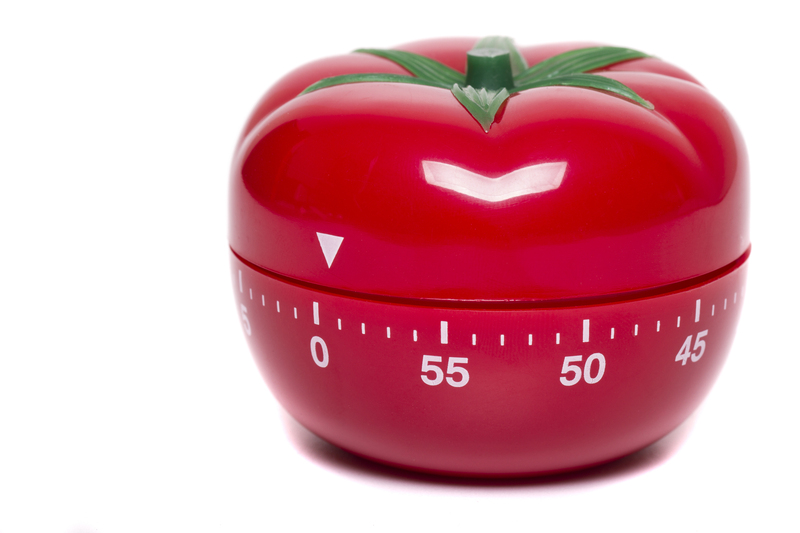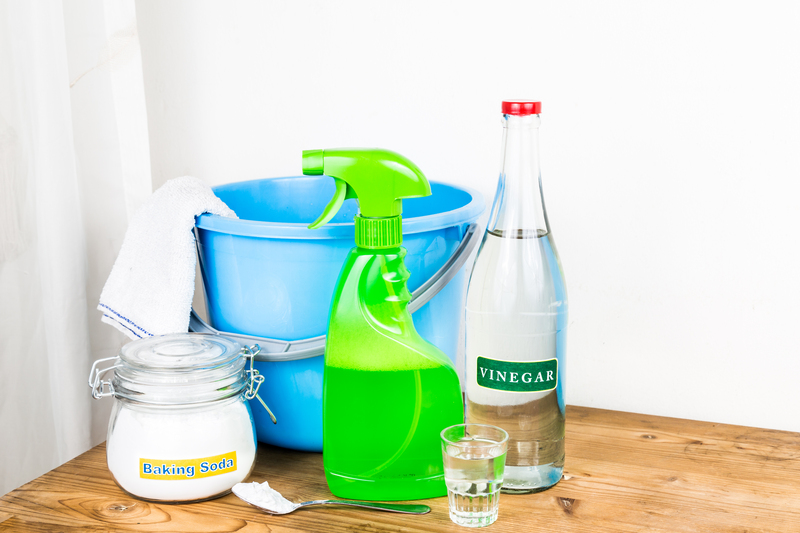Discover Techniques to Clean Burnt Residue on Stovetops
Posted on 18/08/2025
Discover Techniques to Clean Burnt Residue on Stovetops
Stovetops are among the most frequently used surfaces in any kitchen, and as such, they often bear the brunt of everyday cooking mishaps. Whether it's the result of a boiling pot that overflowed or grease popping from a frying pan, burnt residue can quickly accumulate and harden on your stovetop. Not only does this make your kitchen look less appealing, but burnt-on grime can also affect the performance of your stove. Discover techniques to clean burnt residue on stovetops and keep your kitchen looking sparkling and inviting with our comprehensive, step-by-step guide!

Why It's Important to Keep Your Stovetop Clean
- Prolongs Appliance Lifespan: Regular cleaning prevents the buildup of residues that may corrode your stovetop or hinder functionality.
- Improves Cooking Performance: Residue and grease can affect burner efficiency, leading to uneven heating or lingering odors.
- Prevents Kitchen Accidents: Built-up burnt residue is a fire hazard, especially on gas stovetops.
- Enhances Kitchen Hygiene: A clean stovetop wards off pests and bacteria, making your cooking space safer and more inviting.
Understanding how to clean burnt-on residue on your cooktop is a vital kitchen skill for every homeowner! Let's explore proven, effective methods for keeping your stovetop spotless, regardless of whether you have a gas, electric, or glass surface.
Essential Cleaning Supplies for Stovetop Residue
- Baking Soda
- White Vinegar
- Lemon Juice
- Dish Soap
- Microfiber Cloths
- Plastic or Silicone Spatula
- Non-abrasive Scrubbing Pad
- Razor Blade Scraper (for glass stovetops)
- Commercial Stove Cleaner (optional)
- Gloves (to protect your hands)
How to Clean Burnt Residue on Different Types of Stovetops
1. Gas Stovetops
Gas stovetops are classic, but they're also prone to collecting burnt food and grease around burners and grates. Here's how you can effectively clean burnt food residue from your gas stove:
- Step 1: Remove Burner Grates and Knobs
Take off grates and burner caps for easier access. Soak them in a mixture of hot water and dish soap for 15-30 minutes to loosen grime.
- Step 2: Apply Baking Soda Paste
Mix equal parts baking soda and water to form a paste. Apply generously to stubborn, burnt-on spots, and leave for 15 minutes to help dissolve the debris.
- Step 3: Gentle Scrubbing
Using a non-abrasive pad or a soft-bristled brush, gently scrub the residue in circular motions. For very tough spots, a toothbrush can help get into crevices.
- Step 4: Rinse and Wipe
Wipe away loosened residue with a damp microfiber cloth. Rinse the grates and knobs, dry thoroughly, and replace them on the stovetop.
- Step 5: Dealing with Persistent Stains
If stains persist, dab white vinegar on the spot and allow it to bubble for a few minutes before scrubbing again.
2. Electric Coil Stovetops
Cleaning burnt residue off electric coil stoves requires a slightly different approach. Here's the best technique:
- Disconnect Coils: Unplug or gently lift the heating elements if your model allows. Be sure they're cool before handling.
- Clean Drip Pans: Remove and soak drip pans in hot, soapy water. Sprinkle baking soda over stubborn residue and spray with vinegar for a natural fizzing action.
- Scrape Burnt-On Food: Use a plastic spatula to avoid scratching. For really tough spots, apply a paste of baking soda and water, then scrub after 15 minutes.
- Wipe Down the Surface: Use a damp cloth with a drop of dish soap to remove all loosened debris before replacing the coils and pans.
3. Glass or Ceramic Stovetops
Glass and ceramic cooktops require extra care to maintain their sleek appearance. Discover methods for cleaning burnt residue off glass stovetops while preventing scratches:
- Let the Surface Cool: Never attempt to clean a hot glass stovetop, as sudden temperature changes can cause cracks.
- Sprinkle with Baking Soda: Generously sprinkle baking soda over burnt areas. Next, place a towel soaked in hot water over the baking soda for 15 minutes.
- Wipe Gently: Use a microfiber cloth or non-abrasive pad to gently buff the residue away.
- Use a Razor Blade Scraper: For extremely stubborn residue, carefully use a razor blade scraper held at a 45-degree angle. Apply minimal pressure and always scrape in one direction to avoid scratches.
- Polish: Finish by spraying the surface with white vinegar and buffing it with a clean, dry cloth for streak-free shine.
Natural Home Remedies for Burnt Residue Removal
Many homeowners prefer non-chemical solutions to protect their stovetop surfaces, health, and the environment. Here are some tried-and-true natural techniques:
Baking Soda and Vinegar
- Sprinkle baking soda liberally over the burnt-on debris.
- Spray or gently drip white vinegar over the baking soda to create a foaming reaction that loosens grime.
- After 15-30 minutes, use a damp cloth or non-abrasive pad to scrub the area.
Lemon Juice and Salt
- Squeeze fresh lemon juice onto the burnt area and sprinkle with salt. The acidity of the lemon breaks down food particles, while salt acts as a gentle abrasive.
- Let it sit for 10 minutes, then scrub and wipe clean.
Tips to Prevent Burnt Residue from Building Up
- Wipe Spills Immediately: As soon as it's safe, clean up spills to prevent them from hardening.
- Use Burner Liners: Special liners are available for gas and electric stoves, protecting your stovetop from accumulating burnt residue.
- Regular Deep Cleaning: Perform a more thorough clean every week to stop stubborn stains before they start.
- Cook on Medium Heat: Extremely high heat can cause foods to burn rapidly and stick to the surface. Moderate temperatures help prevent accidents.
- Choose the Right Cookware: Flat-bottomed, properly-sized pots and pans offer better surface contact and reduce spills.
When to Use Commercial Cleaners
For particularly stubborn burnt-on residue, sometimes home remedies aren't enough. In such cases:
- Pick Stove-Specific Cleaners: Use products labeled safe for your stovetop material.
- Follow Instructions: Adhere strictly to instructions on the label for best results and safety.
- Ventilate: Always ensure your kitchen is well-ventilated when using chemical cleaners to avoid inhalation of fumes.
Best Practices for Stovetop Maintenance
- Clean After Every Meal: Even a quick wipe-down can prevent residue buildup in the long run.
- Inspect Regularly: Check burners and drip pans weekly for burnt-on residue.
- Replace Worn-Out Parts: Don't hesitate to swap out old drip pans, liners, or even burner grates if cleaning becomes ineffective.
- Schedule a Deep Clean: Set a regular schedule for extra attention using the techniques above to keep your stovetop spotless.

FAQs about Cleaning Burnt Stovetop Residue
What is the easiest way to clean burnt food residue from a stovetop?
The easiest technique is a baking soda and vinegar paste. Cover the burnt area, let it sit, and then scrub gently with a non-abrasive pad.
Can you use a metal scraper to clean burnt residue?
Never use a metal scraper on glass or ceramic cooktops, as this will scratch the surface. Use a plastic scraper, or a razor blade explicitly designed for glass surfaces if necessary.
How can I remove burnt stains without chemicals?
Home ingredients like baking soda, vinegar, and lemon juice are effective at loosening and dissolving burnt food residue naturally.
Can commercial cleaners damage my stovetop?
Some commercial products contain harsh chemicals that may be too abrasive for modern stovetops. Always read labels and test cleaners on a small, inconspicuous area first.
Summary: Keep Your Stovetop Sparkling Clean
To remove burnt residue from your stovetop, consistency and the right methods are key. Regular cleaning not only keeps your kitchen looking its best but also extends the life and performance of your stove. Whether you choose natural ingredients like baking soda and vinegar, or rely on commercial products for tough messes, these techniques to clean burnt residue on stovetops ensure safe, effective results for every surface type.
Make stovetop cleaning part of your kitchen routine, and enjoy hassle-free cooking in a beautiful, hygienic space!




